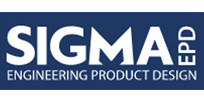 Add My Company
Add My Company
Sign In
Give Them Confidence To Return
15-07-2020

How can you reassure them
So, it’s official. Scotland is reopening! However, after conversations with friends, colleagues and family, there seems to be a distinct lack of confidence as it relates to re-entering enclosed public places including restaurants, where the wearing of a mask would encumber our ability to engage in social activities such as eating and drinking.
The reality is, in this country, we spend most of our winter months indoors. It is also a fact that every year the National Health Service (NHS) is brought to breaking point by one virus or the other. Every year many people become ill, some more so than others. As a society, we spend millions on extra manpower, software and hardware to bolster the NHS for the next yearly wave.
‘We’ll be ready next year!’ So we tell ourselves only to discover that the goal post has moved once more - the NHS is on its knees again despite the heroic efforts of all NHS staff.
But what if we are looking at this from the wrong perspective? What if we are trying to push the brolly up from the wrong end? Could it be that infection rates are higher than necessary, giving rise to hospitalisation and death? The link between infection rates and the combination of poor air quality and patterns of air movement in enclosed public places is a point for critical focus. We can improve the health of our nation by addressing issues related to quality of air and the pattern of air movement that is served to us in public places.
A few years ago, smoking was banned in public places because of the impact of second-hand tobacco smoke on people sharing the same enclosed space. Some would remember the smell of tobacco wafting over from a smoker some distance away. Why is this important? Well, our experience of tobacco smoke gives us a tangible illustration of how very small particles can be carried in air. When subject to the same aerodynamic forces, aerosols behave in the same way as the tobacco smoke.
The thing is this. For months prominent scientists from around the world have advocated for recognition that COVID-19 can be carried by aerosols (fine spray). The World Health Organisation (WHO) recently conceded that this could be the case. Now, if COVID-19 can remain suspended in air, and lingers in the atmosphere, then it is highly likely that the other coronaviruses that threaten to decimate the NHS every year also behave in the same manner - lingering in the air that we breathe indoors.
If the above is true, and we have no reason to doubt that it is, then a better and more ‘Robust Ventilation Strategy’ needs to be put in place as part of our public health policy. We need to capture and remove this and other viruses from enclosed public spaces as an immediate response to the present threat and to future proof our society against other viruses that would threaten to undo us.
We must decide whether we want a permanent fix or are willing to endure the endless yearly cycle of sick days, ill-health and death.
Are we going to be ready with a robust response if or when the next virus or disease strikes?
As other countries reopen public places ahead of us, we can see a pattern of opening and closing emerging, as public places of different types become hot spots for the virus. It is widely accepted that going into public spaces with poor ventilation gives rise to infections. Unarguably, quality ventilation must be central to reopening safely and permanently.
There are three basic constituents of a good quality ventilation strategy:
1. Correct levels of extract
2. Correct levels of supply or make up air
3. A definitive air pattern - how the forces induced by supply and extract cause the air to move in a way that minimises human contact with the virus.
Given the trepidation that exists around the reopening of indoor public spaces, there are a couple of salient questions that need to be addressed. What can business owners do to protect and bolster the confidence of customers and staff? And, how can you reassure them that you have done everything you can to protect them?
Well, in addition to social distancing and sanitation measures, Sigma Engineering Product Design (SigmaEPD) suggests the following:
• Implement measures such as effective ventilation that would reliably remove viruses contained in aerosol. A well-designed ventilation system is also effective in removing larger virus-carrying droplets that may settle on surfaces. Additionally, you can ensure that the air movement induced by your ventilation system leaves no regions of stagnant air, thus minimising hiding places for the virus.
• Ultraviolet Germicidal Irradiation (UVGI) and some other filtration systems can be used to kill viruses in confined spaces. These can Ideally be used in conjunction with mechanical or natural ventilation.
• Publicise the steps that you have taken to remove or kill virus particles that would otherwise linger.
Please contact Sigma Engineering Product Design Ltd (SigmaEPD) for further information on:
P : 01294203374
M : 07821256603
E : Info@sigmaepd.com
W: www.sigmaepd.com
For more information on Give Them Confidence To Return talk to Sigma Engineering Product Design Ltd
Enquire Now
More Blogs
List your company on FindTheNeedle.